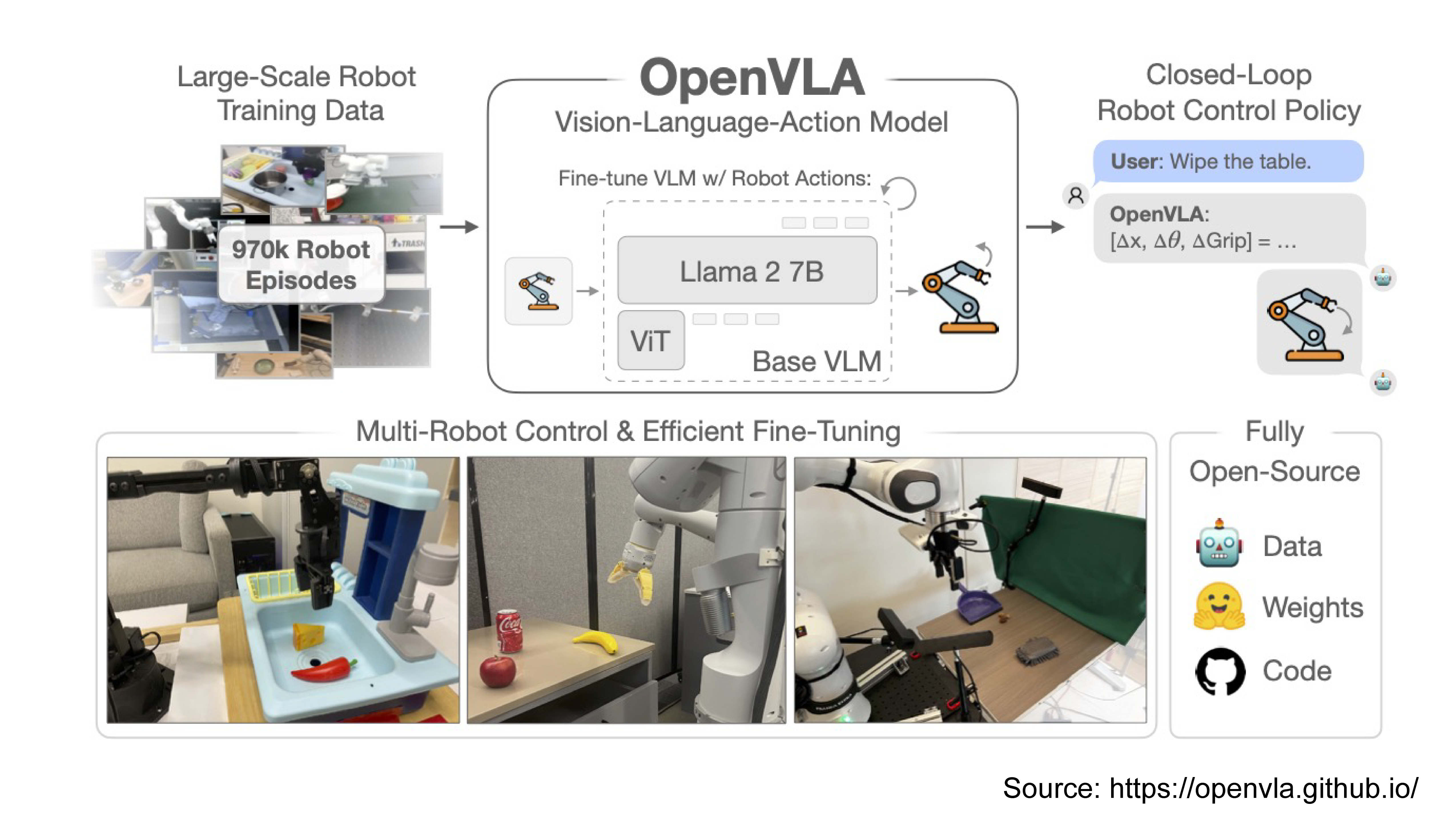
Project Overview
Our Autonomous Robotics project focuses on advancing Vision-Language-Action (VLA) models to create smarter, more adaptive robots capable of intuitive interaction. This research bridges perception, language understanding, and real-world action for the next generation of autonomous robotics systems.
Goals
- Intelligent Perception: Develop advanced computer vision systems for robot environmental understanding
- Language Integration: Create robots that can understand and respond to natural language instructions
- Adaptive Control: Build control systems that can adapt to new environments and tasks
- Sim-to-Real Transfer: Bridge the gap between simulation and real-world robot deployment
Key Research Areas
- Vision-Language-Action Models: Integration of multimodal AI for comprehensive robot intelligence
- Real-World Adaptation: Techniques for robots to adapt to unstructured environments
- Human-Robot Interaction: Natural and intuitive interfaces for robot collaboration
- Autonomous Decision Making: AI systems for independent robot task planning and execution
Team Members
Principal Investigator
- Dr. Chien Truong-Quoc - Hanoi University of Science and Technology (HUST)
- Dr. Minh-Tuan Nguyen-Thai - Hanoi University of Science and Technology (HUST)
Undergraduate Students
- Mr. Hieu Nguyen Van - Hanoi University of Science and Technology (HUST)
- Mr. Long Pham Ba - Hanoi University of Science and Technology (HUST)
- Mr. Thuong Tran Ngoc - Hanoi University of Science and Technology (HUST)
- Mr. Minh Vuong Duc - Hanoi University of Science and Technology (HUST)
- Mr. Quoc Dong Anh - Hanoi University of Science and Technology (HUST)
- Mr. Dat Le Tien - Hanoi University of Science and Technology (HUST)
- Mr. Truong An Van - Hanoi University of Science and Technology (HUST)
Current Focus Areas
- Perception Systems: Advanced computer vision for robot navigation and manipulation
- Language Processing: Natural language understanding for robot instruction following
- Action Planning: Intelligent decision-making systems for complex task execution
- Learning Algorithms: Continuous learning and adaptation in dynamic environments
Future Directions
- Development of more sophisticated VLA architectures
- Integration with physical robot platforms
- Real-world deployment and testing
- Applications in healthcare, manufacturing, and service robotics
- Collaboration with industry partners for practical implementations
🔍 Search for Autonomous Robotics related papers on the Research page